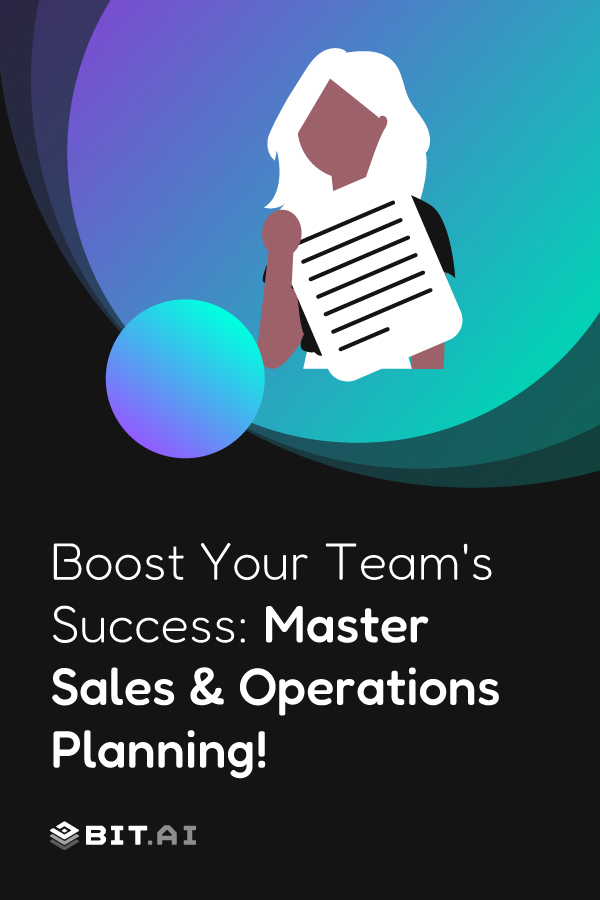Have you ever thought about trying to find the answer to why some companies constantly and effortlessly achieve their sales plans while others barely keep up? The secret sauce usually lies in their approach to Sales and Operations Planning, or (S&OP). This process ensures that your sales forecasts, supply chain operations, and revenue targets are all aligned to move your business in the right direction.
In today’s quick-paced market, you simply can’t afford incoordination among the marketing, sales, finance, and operations teams. You need real-time collaboration, open data sharing, and accurate forecasts to keep everything running smoothly. That is where digital tools and platforms step in to make planning strategic rather than a source of stress.
When your operations and sales teams coordinate more effectively, you establish the ideal balance of demand and supply, reduce waste, enhance customer satisfaction, and ultimately increase profitability. It’s not just about planning better, it’s about planning smarter.
Ready to learn what Sales and Operations Planning is all about and how you can improve it for your team? Let’s define it together 👇
Understanding Sales and Operations Planning (S&OP)
So, what is Sales and Operations Planning (S&OP) and why is everybody going on about it?
At its essence, S&OP is a collaborative system that enables your company to balance supply and demand while maintaining focus on your business objectives. It links various departments — such as sales, marketing, finance, and supply chain — so that everyone’s working towards the same goals. Imagine it as a strategic linkage between your firm’s planning and action.
S&OP involves using data to make informed business decisions. Participating in S&OP ensures that you are positioning your organization to better manage inventory, eliminate bottlenecks, and exceed customer expectations. If you’re managing a chain of stores, a manufacturing plant, or a software-as-a-service business, proper planning ensures that what you make and ship is always aligned with customer demand.
In summary, Sales and Operations Planning enables you to connect your sales forecasts with operational capabilities and supply chain capacity, ensuring everyone is working on the same set of objectives. It enhances cross-functional visibility, enabling quicker, smarter decision-making. By leveraging the right resources, you can reduce excess inventory, avoid stockouts, and hit your revenue goals without ever sacrificing customer satisfaction.
Now that you know what S&OP actually is, let’s move on to the actual benefits that it can bring to your company. 👇
Why Sales and Operations Planning Matters for Your Business
You already know that Sales and Operations Planning (S&OP) helps align different departments, but what does that really mean for your business? These are the major advantages you will realize when your S&OP process is designed and working effectively:
1. Enhanced Accuracy of Sales Forecasting
Think about how often forecasting goes wrong simply because teams are working in isolation. Sales makes one projection, marketing has another, and operations are left guessing what’s real.
When these teams finally come together under a unified S&OP process, the picture sharpens. Real-time insights from every department create a single, accurate forecast that the whole business can trust. No more second-guessing demand — just clear data, smarter planning, and smoother execution that keeps everything running in sync.
2. Improved Supply Chain Efficiency
Ever felt like your supply chain is always one step behind demand? That’s where an integrated S&OP plan changes the game.
By linking sales forecasts with production and logistics data, your team can adjust in real time — no scrambling, no last-minute rush orders. Bottlenecks are caught before they become problems, deliveries move faster, and your supply network becomes more flexible and cost-efficient. In a world where agility equals survival, S&OP gives your operations a real competitive edge.
Want smoother sales operations? Learn how to create a Sales Process document!
3. Better Customer Satisfaction
Customers don’t just remember what they buy — they remember how it felt to buy it. When orders are filled quickly and accurately, it builds trust that lasts long after the sale.
By aligning operations directly with sales goals, you’re not just meeting customer expectations; you’re exceeding them. That consistency creates confidence, repeat purchases, and a brand reputation that stays strong even when the market doesn’t.
4. Greater Profitability and Revenue Growth
Behind every strong S&OP plan lies one simple truth — precision drives profit.
When teams coordinate demand planning, cost management, and inventory control from the same playbook, every decision pushes toward your revenue goals. Wasted resources shrink, margins expand, and visibility improves. The best part? You’re not reacting to the market anymore — you’re predicting it and planning ahead with purpose.
5. Increased Cross-Functional Collaboration
S&OP is not just a process, but a mindset shift. It effectively transforms individual departments into one collective, unified team, working toward a single goal.
Sales, marketing, finance, and operations no longer operate toward different targets — working independently, instead they are sharing data, reporting results together, and making real time decisions. The result is a culture of accountability and transparency that is no longer driven by performance metrics, but rather by how well teams move in unity.
Now that you understand the advantages, it’s time to learn about the top tools to make your S&OP strategy come true — including how Bit.ai can revolutionize your planning process. 👇
Best S&OP Software to Align Sales and Operations
Now that you’re aware of the advantages of a robust S&OP process, it’s high time you brought it all together with the proper tools. ⚙️ These platforms assist you in streamlining planning, enhancing transparency, and promoting teamwork – so that each forecast and operation is perfectly in sync with your business objectives.
Some of the top tools that you can try out are listed below:
1. Bit.ai – AI-Powered Workspace for Connected Sales and Operations Planning
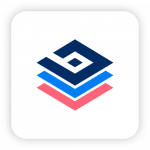 Imagine a workspace where every sales forecast, strategy deck, client proposal, and operations plan lives together — organized, current, and collaborative. That’s exactly what Bit.ai delivers.
Imagine a workspace where every sales forecast, strategy deck, client proposal, and operations plan lives together — organized, current, and collaborative. That’s exactly what Bit.ai delivers.
An AI-powered docs, wikis, and knowledge management platform, Bit gives sales and operations teams the space to plan, forecast, and execute with precision. It turns disconnected spreadsheets, scattered notes, and endless email threads into one intelligent system that keeps everyone in sync — from reps and analysts to department heads.
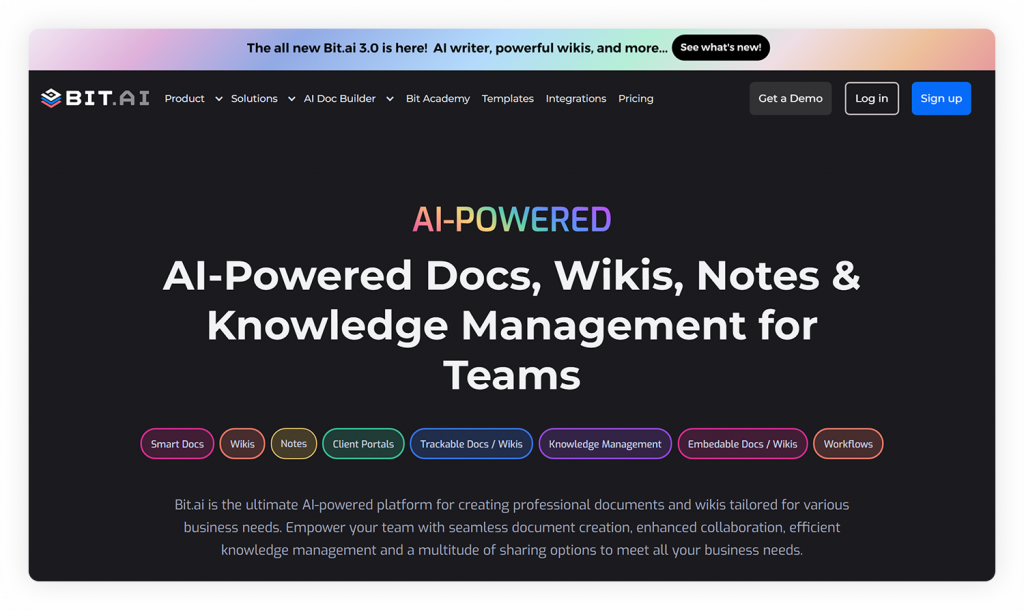 In most organizations, sales planning feels fragmented. Forecasts hide in files, insights stay buried in chats, and presentations vanish in cluttered drives. Bit.ai changes that. Every goal, update, and discussion flows through a single, dynamic workspace — accessible to everyone who needs to see it.
In most organizations, sales planning feels fragmented. Forecasts hide in files, insights stay buried in chats, and presentations vanish in cluttered drives. Bit.ai changes that. Every goal, update, and discussion flows through a single, dynamic workspace — accessible to everyone who needs to see it.
With Bit, you can align quarterly goals, review win rates, forecast demand, and connect sales strategies directly to execution. No more version confusion. No lost updates. Just one organized command center for all your planning. Whether you’re refining your go-to-market strategy, tracking performance metrics, or bridging sales and operations, Bit keeps every team aligned on what matters most — predictable, scalable growth.
Key Features:
- Centralized Sales Hub
Organize all your sales materials—forecasts, deal trackers, strategy decks, and client documents—inside structured workspaces. With automatic version control and powerful search, your team always works from the most up-to-date information.
- Collaborative Sales Playbooks
Create sales playbooks, SOPs, and strategies that your team can co-edit in real time. Mention teammates, comment contextually, and evolve your playbooks as markets shift or targets change—keeping collaboration continuous and context-driven.
- AI Doc Builder and Genius Writer
Generate full-fledged sales reports, forecast summaries, or performance reviews using Bit’s AI Doc Builder. And when you need personalized client emails, follow-ups, or presentations, the Genius Writer creates professional content in seconds—saving hours of manual work.
- Workflow Alignment Tools
Integrate Bit.ai with CRMs, project management tools, and analytics dashboards to align sales and operations effortlessly. Embed visual KPIs, charts, and performance summaries directly into your docs—so every meeting and plan is guided by live data.
- Version History, Trackable Links & Guest Access
Maintain complete visibility with trackable links and version control. Grant guest access for client collaboration, review engagement analytics, and restore past document versions anytime—ensuring transparency and control across teams.
Why It’s Great for S&OP:
Bit.ai bridges the gap between sales and operations by turning your plans into a living, collaborative system. Sales leaders can visualize targets and progress, operations teams can forecast demand accurately, and executives can monitor updates — all in real time, without endless reporting cycles.
Instead of static spreadsheets and siloed tools, Bit.ai becomes your dynamic planning hub — connecting strategy, execution, and insight. It’s how modern teams bring clarity to complexity, collaboration to planning, and growth to every forecast.
Pricing:
Bit.ai provides a Free plan with significant features, while premium plans begin at $8 per member/month, which is perfect for expanding teams around the world.
2. Anaplan – Enterprise Connected Planning for Complex Operations
 Ever wish your strategy, finance, and operations teams could finally plan in harmony — no silos, no lag, no guesswork? That’s exactly what Anaplan delivers.
Ever wish your strategy, finance, and operations teams could finally plan in harmony — no silos, no lag, no guesswork? That’s exactly what Anaplan delivers.
Built for enterprise-scale connected planning, Anaplan helps teams model “what-if” scenarios, test assumptions, and make decisions based on real-time insights. Powered by its signature Hyperblock™ engine, it lets you simulate demand shifts, forecast outcomes, and update financials instantly — all without breaking the flow.
It’s the ultimate planning command center for companies with complex supply chains or fast-moving global operations.
Key Features:
- Predictive analytics for more accurate sales forecasting
- Dynamic modelling for demand and capacity planning
- Hyperblock™ engine for instant, scalable recalculations
- Seamless integration with CRM and ERP systems
- Advanced reporting that aligns operations and finance
Pricing: Custom pricing based on organization size and planning complexity.
3. SAP Integrated Business Planning (SAP IBP) – End-to-End Supply Chain Intelligence
 Picture your entire supply chain — from procurement to delivery — moving in perfect rhythm. That’s the promise of SAP IBP, a cloud-based planning platform that gives global enterprises complete control and visibility.
Picture your entire supply chain — from procurement to delivery — moving in perfect rhythm. That’s the promise of SAP IBP, a cloud-based planning platform that gives global enterprises complete control and visibility.
It connects sales, finance, and logistics data into one cohesive workflow, making it easier to build and execute an integrated S&OP strategy. With real-time forecasting, scenario simulation, and SAP Analytics Cloud integration, teams can anticipate change before it happens — and act with confidence.
In an unpredictable world, SAP IBP keeps your operations steady and your teams aligned.
Key Features:
- Complete supply and demand visibility
- Using scenario simulation for predictive forecasting
- Optimization of capacity and inventory
- Collaboration via the cloud for remote teams
- Using embedded analytics to make better choices
Pricing: Enterprise-level SAP IBP pricing available upon request.
Plan, align, and adapt your S&OP strategies seamlessly with Bit.ai’s collaborative workspaces.
4. Oracle S&OP Cloud – Real-Time Alignment Between Sales and Operations
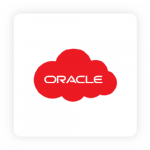 Imagine having every department — sales, finance, production, and supply chain — synced on the same page, reacting instantly to market changes. That’s the power of Oracle S&OP Cloud.
Imagine having every department — sales, finance, production, and supply chain — synced on the same page, reacting instantly to market changes. That’s the power of Oracle S&OP Cloud.
This platform unifies planning data from across your organization into a single, real-time dashboard. Its automation and scenario tools let you balance supply and demand, explore different outcomes, and make faster, better-aligned decisions.
For businesses already using Oracle ERP or Oracle Analytics Cloud, it becomes the natural extension that ties your entire operational ecosystem together.
Key Features:
- Real-time performance and demand tracking
- Automated balancing of supply and production
- Pre-built dashboards for finance and operations
- Scenario planning and KPI monitoring
- Deep integration with Oracle ERP and cloud tools
Pricing: Based on deployment size and subscription level; available upon request.
5. Kinaxis RapidResponse – Agile Planning for a Fast-Moving Market
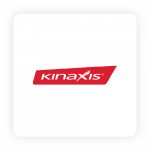 In a world where one market shift can throw off an entire production plan, Kinaxis RapidResponse helps you stay one step ahead.
In a world where one market shift can throw off an entire production plan, Kinaxis RapidResponse helps you stay one step ahead.
Its patented Concurrent Planning™ technology connects your supply chain data, processes, and teams in real time — so when demand spikes or supply dips, everyone sees it, understands it, and acts together. With built-in scenario modelling and risk analysis, it’s like having a “what’s next” radar for your business.
For teams that thrive on agility, Kinaxis turns reactive planning into a proactive strategy.
Key Features:
- Real-time visibility across the supply chain
- Concurrent Planning™ for instant scenario modelling
- Risk management and response prioritization tools
- Collaboration workspace for remote teams
- Intelligent dashboards for KPIs and insights
Pricing: Enterprise pricing customized for business scale and operational complexity.
Heads Up 📌 Want better sales results? Start monitoring these 11+ Sales KPIs.
How S&OP Works: A Practical Example
Theory is great — but what does S&OP look like in real life? Let’s walk through a real scenario.
Imagine you’re overseeing an international retail business selling electronics. You want to have your products available in different regions, ensure you have the right amount of stock, and have your forecasted sales match the real demand for your products. However, if you do not have a formal S&OP process, you run the risk of experiencing stockouts in high-demand areas and excess stock in lower-demand markets.
For a good and practical Sales and Operations Planning process, you have to keep the following steps in mind:
- Step 1: Collect all historical sales data from every location to accurately predict upcoming demand.
- Step 2: Align your supply chain and production calendars with expected demand.
- Step 3: Work with your finance and operations teams to set credible revenue expectations.
- Step 4: Monitor performance consistently and make changes as market conditions shift.
With the use of platforms such as Bit.ai, all your planning documents, forecasts, and reports become accessible in one location. This facilitates easy collaboration across international teams with everyone being on the same page and ready to respond should demand increase or a change in supply.
💡 Pro Tip: Collaborative S&OP platform companies achieve up to 20% quicker response to demand changes and increased customer satisfaction ratings due to better inventory availability.
With this scenario in mind, it’s now time to discuss easy tips to enhance your Sales and Operations Planning process so you can deliver the same outcomes. 👇
How to Make Your Sales and Operations Planning More Effective
Want to make your S&OP process more efficient and actionable? Here are practical steps you can follow to align your sales, operations, and supply chain teams globally:
Step 1: Identify Clear Revenue Goals
The first step is developing realistic and measurable revenue goals for both your operations and sales teams to attach themselves to. When it is clear what is expected, it enables resource allocation, performance assessment, and departmental alignment to be prioritized. If clear objectives are not met, no plan will work, no matter how good it is.
Step 2: Leverage Correct Data for Forecasting
Gather historical sales information, trends, and supply chain intelligence to create sound forecasts. Accurate information provides a basis for demand prediction, stock replenishment, and excess supply reduction. When you have better predictions, you make better business decisions.
Step 3: Promote Cross-Functional Collaboration
Promote cross-functional teams that include sales, finance, marketing, and operations to work together. Share information, conduct regular review meetings, and make sure each department realizes how their performance affects overall performance. Collaboration avoids silos and speeds up decision-making.
Step 4: Make use of Planning Tools Such as Bit.ai ️
Adopt a platform that connects your forecasts, reports, and team communication in one place. With Bit.ai, teams can co-edit plans, track changes in real time, and stay aligned across global operations. The result is full visibility, zero version confusion, and a faster, more agile S&OP process.
Step 5: Review, Adjust, and Optimize Regularly
S&OP is not a static event. Watch KPIs, follow performance against target, and tweak your plans as market dynamics shift. Ongoing optimization keeps you agile and responsive to customer demand.
Finally, your S&OP process is streamlined. It’s now time to conclude and observe how all these tactics meet for a quantifiable business outcome. 👇

Wrapping Up: Making Sales and Operations Planning Actionable
You’ve learned how Sales and Operations Planning (S&OP) can revolutionize the manner in which your company coordinates sales, operations, and supply chain activities. By establishing precise targets, taking advantage of accurate forecasts, aligning collaboration, and employing tools such as Bit.ai, you can convert strategy to action and generate quantifiable results throughout the organization.
Don’t forget, S&OP is not merely a planning process — it’s a cycle of ongoing improvement. Repeatedly checking forecasts, making adjustments to operations, and keeping teams in sync guarantees that you hit revenue goals, maximize supply chains, and delight customers regularly.
By embracing a global mindset and applying the proper tools, you can break through barriers such as demand variability, inventory imbalance, and misalignment between departments. What’s the payoff? Faster, smarter decisions and higher profitability, regardless of where your business is located.
Don’t Miss 💌 Operational Plans are key to smarter S&OP—learn to create yours.
FAQs
- What is the fundamental objective of sales and operations planning?
The first aim of S&OP is to get your sales projections in line with your capacity for operations, so that your revenue goals, supply chain, and customer demands are all satisfied. By developing a single, cohesive plan, you can save money on inventory, avoid stockouts, and make more intelligent, fact-based decisions for your company.
- How do you execute sales and operations planning?
You execute S&OP through gathering precise sales forecasts, cooperation with the operations and finance teams, and utilization of dependable planning tools such as Bit.ai. Frequent reviews, scenario planning, and tracking KPI are necessary to make certain that your plans are flexible and actionable in all departments.
- What are the 5 major factors in the operational plan?
The five key factors in your operational plan are:
- Demand forecasting is used to predict future sales.
- To achieve optimal inventory levels, inventory planning is necessary.
- Capacity planning to match demand and production.
- Alignment of finances to track revenue targets.
- Monitoring performance with dashboards and KPIs.
- What are the sales and operations planning KPIs?
Some of the most essential S&OP KPIs are forecast accuracy, order fulfillment rate, inventory turnover, revenue growth, and customer satisfaction rates. Tracking these will enable you to see how well your planning process is influencing outcomes and achieving global business objectives
